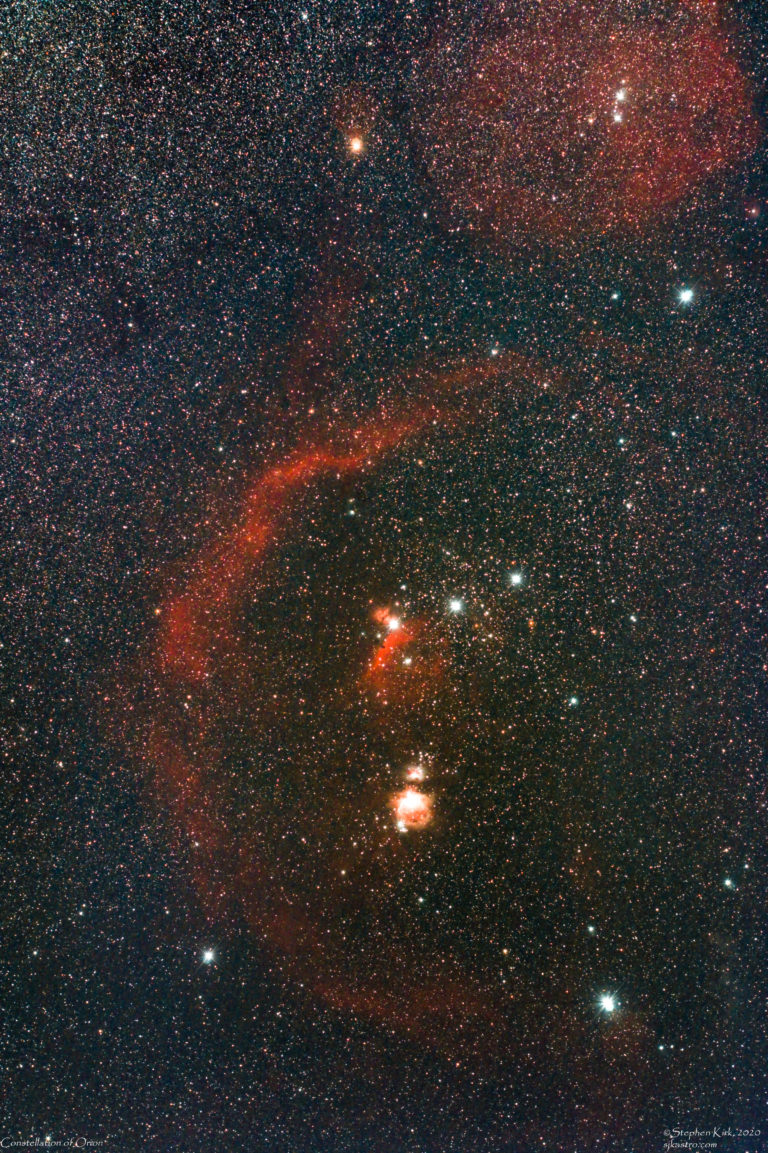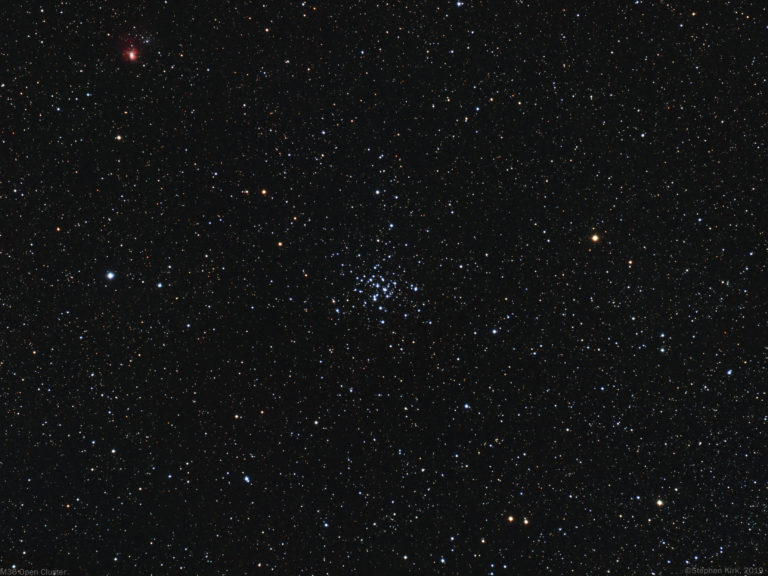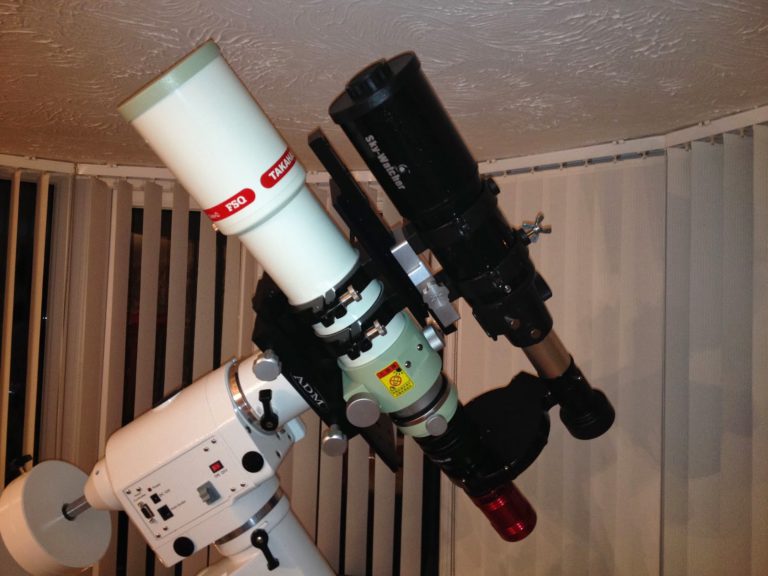Orion Dominating the Winter sky in the Northern Hemisphere, Orion is probably the most recognisable of constellations. It is full of very important and popular astronomy objects and stars. The image here is a stack of 80 x 80 second exposures at F4 and ISO 800 taken in January 2020 from my backyard in Nottingham with a modified Canon 1100D and a 50mm lens. The camera followed the sky with a Star Adventurer tracker. It was cold and windy at the time I took the exposures. I stacked them with Deep Sky Stacker and processed with PixInsight and Photoshop. You can see the arc of Barnard’s Loop and The Orion Nebula and Horsehead Nebula. Also visible glowing faintly to the bottom right is the ghostly outline of the Witch Head Nebula. Orion Below is the annotated version showing many of the interesting stars and objects within Orion. Very obvious is…
Introduction M45 – The Pleiades Presented here is M45, the famous Pleiades Open Cluster of stars. Image was captured in…
M36 is an Open Cluster of stars (as opposed to a Globular Cluster) in the Constellation of Auriga. M36 is high overhead in Europe during the nightimes of winter months and is one of three Messier Open Clusters in Auriga, the others being M37 and M38. All of these are visible in a small pair of binoculars as nebulous and fuzzy blobs. M36 and the other clusters make a fine site in a telescope and dozens of stars can be seen. Note also the Red nebula to the top left – NGC 1931 (Sh2-237). There are some tiny PGC catalogue galaxies, billions of light years away in this image. M36 Open Cluster in Auriga This image was taken from by backyard in Nottingham, UK on the 24th January 2018 with my Takahashi FSQ85 refractor and Moravian instruments G21-8300 CCD camera with Astrodon RGB Generation 2 E series filters on MESU…
TEC 140 mounted on MESU 200 Please note, the opinions expressed here regarding my TEC 140 are mine. No one…
I bought my Takahashi FSQ-85EDX telescope from Ian King Imaging in November 2013 and bought it with the 0.73 reducer and numerous Takahashi adapters. I have not as yet used it reduced, only at the native F5.3. I am very impressed with the scope so far. It weighs only 4kg but feels so much more than that. The scope is a thing of beauty with impeccable paintwork and build quality. This is truly a scope to last a lifetime if cared for. I went around the mental “shall I buy a 85 or 106” loop a million times. However, I already have a TEC 140 telescope to give me a smaller (or zoomed in) image scale for smaller objects like M81, M87 etc and the Abell galaxy clusters. I felt the FSQ-85 gave me better options for wide-field imaging of large targets like M31, M33, North American Nebula, Rosette Nebula…



